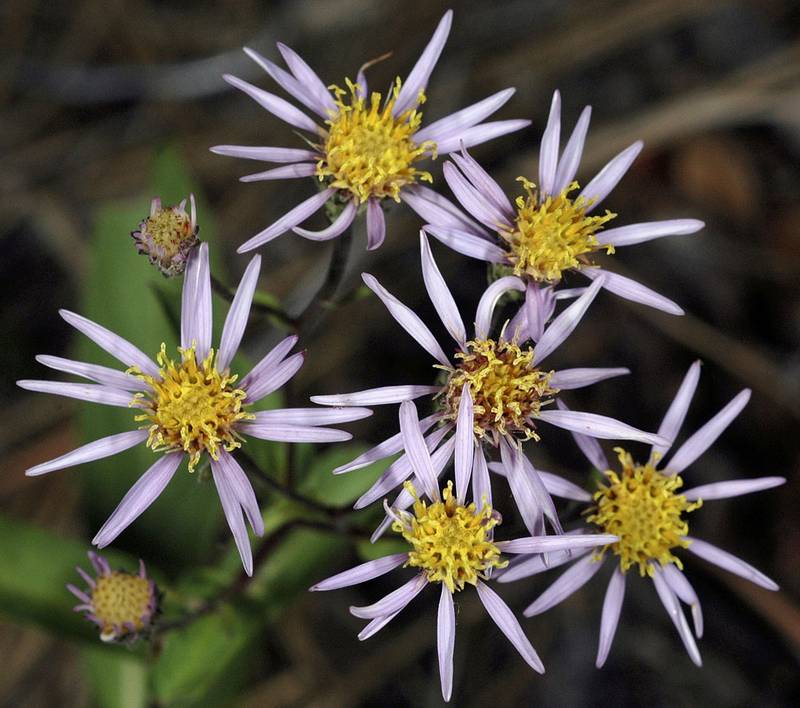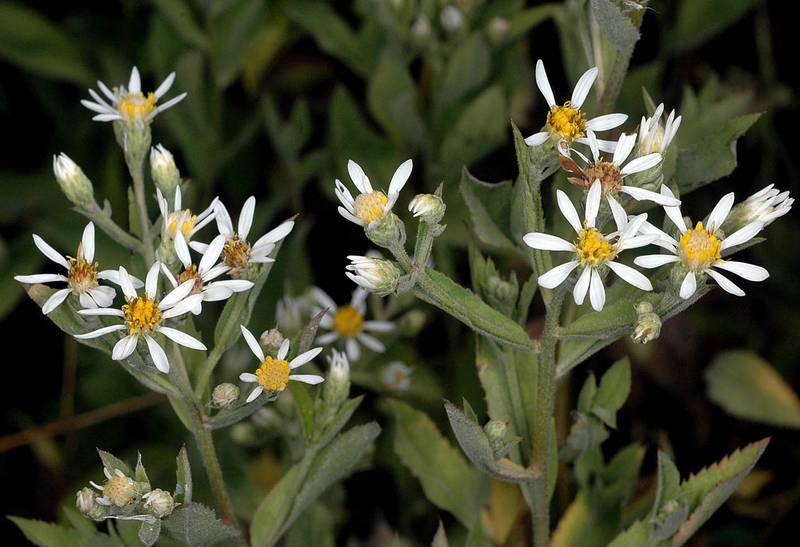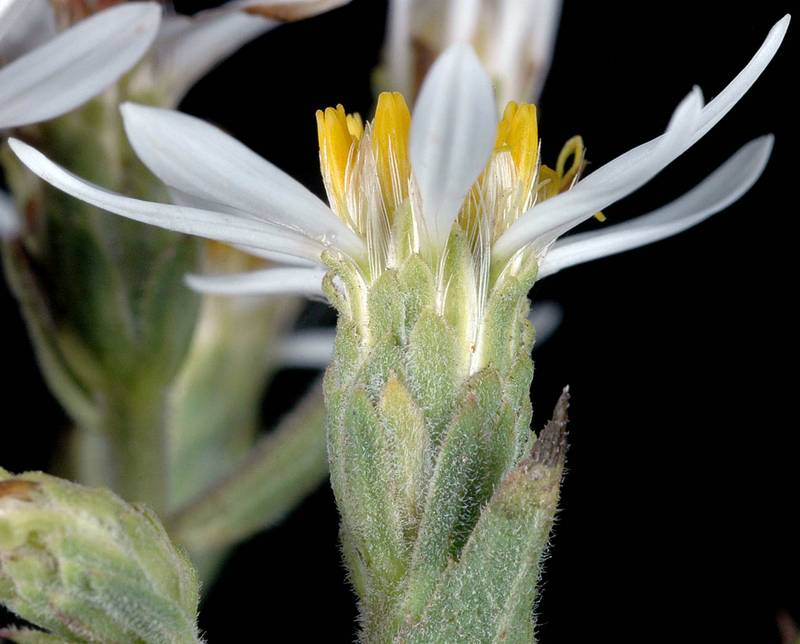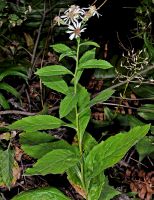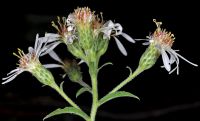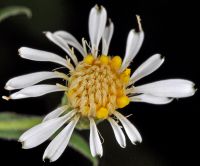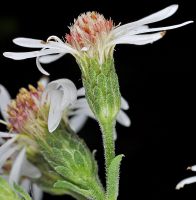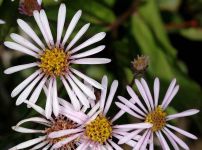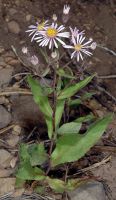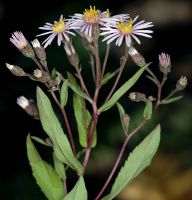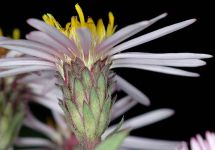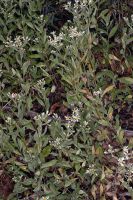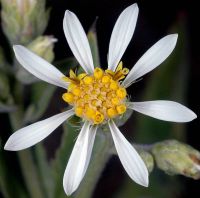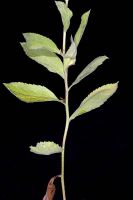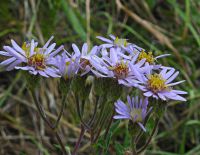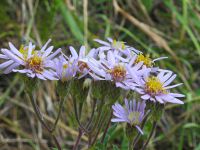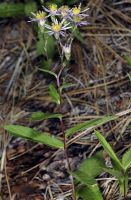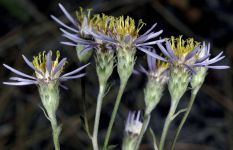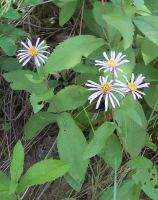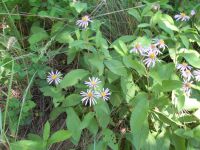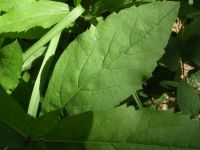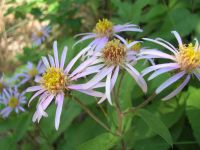Distribution: Occurring east of the Cascades crest and in the Columbia River Gorge in Washington; British Columbia to California.
Habitat: Rocky outcroppings, forest edges and openings at low to middle elevations.
Flowers: July-September
Origin: Native
Growth Duration: Perennial
Conservation Status: Not of concern
Pollination: Bees, flies, butterflies
Herbaceous perennial from well-developed rhizomes, 1-7 dm. tall, the stem and lower surface of the leaves with short hairs.
Leaves firm, usually sharply toothed, broadly oblanceolate or broader, the largest ones, found a little above the base of the stem, up to 10 cm long and 4 cm. wide; lowest leaves strongly reduced, middle and upper leaves gradually reduced, the stem appearing leafy.
Heads several in a flat-topped inflorescence; involucre imbricate in several series, the bracts green-tipped, often purple-margined; rays lavender to white, 8-12 mm. long; disk corollas yellow, 7-8 mm. long, the tube longer than the slender limb; pappus bristles of various lengths.
Achene.
The large, sharply-toothed leaves are distinctive.
Publication: Phytologia. 77: 261. 1995.
PNW Herbaria: Specimen records of Eurybia radulina in the Consortium of Pacific Northwest Herbaria database
WA Flora Checklist: Eurybia radulina checklist entry
OregonFlora: Eurybia radulina information
E-Flora BC: Eurybia radulina atlas page
CalPhotos: Eurybia radulina photos

